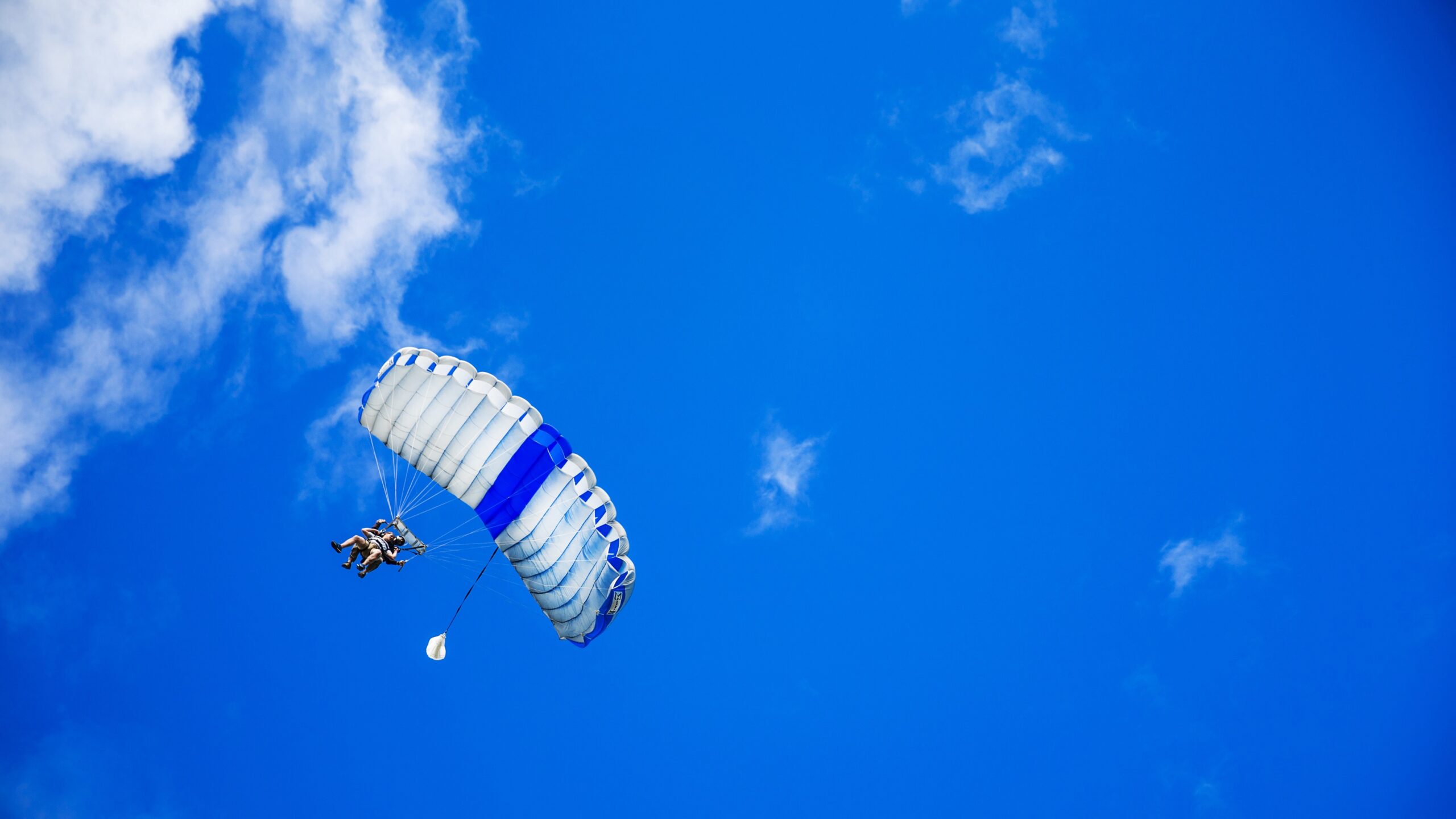Skydiving
Skydiving
Learn to Skydive: Information, Locations, Companies, Equipment, Tandem, Solo Training

Choose a State for Skydiving:
Skydiving is the action of jumping from an airplane, helicopter, blimp, or hot air balloon and deploying a parachute after a freefall.
Safety:
Skydiving may appear dangerous but fatalities are rare. Due to regulations, safety equipment, and advances in technology skydiving is a very safe sport. In the United States, it is estimated that there is one death for every 100,000 skydives. In fact, the statistics show that you are more likely to die in a car accident on the way to go skydiving than during the sport itself.
Most injuries and fatalities occur because of skydiver error. This includes an error in judgment, unsafe maneuvers, high speed impact, canopy collisions and swooping errors. The weather plays an important role in the safety of skydivers. If winds are too strong or drastically shift while the skydiver is in flight there is a greater risk of injury.
Most modern parachutes incorporate an automatic activation device (AAD) for the rare event that the main parachute does not open within a safe altitude.
Typical Skydive:A typical skydive begins at around 13,000 feet with about 60 seconds of freefall before activating the parachute. Terminal velocity ranges from 110 to 140 miles per hour. Most people imagine there is a “falling feeling” but the force of the wind provides stability so instead it’s more of a floating experience. After the parachute is deployed, the skydiver has about 5 minutes of parachuting before landing (dependent upon the deployment altitude).
Tandem:
Most skydivers make their first jump secured to a trained instructor with a two-person harness. This method is known as a tandem skydive. Tandem skydives allow practically everyone the opportunity to enjoy skydiving since little training is needed. Generally, only a 30 minute presentation is needed before jumping. Tandem skydives allow individuals to focus purely on learning. Most facilities require that the skydiver be less than 220 pounds due to safety reasons.
Freefall Training:
Freefall training includes Accelerated Free Fall (AFF), Instructor Assisted Deployment (IAD), and Static Line training. Training consists of classroom education and techniques which normally lasts 6-8 hours dependent upon the course. Many facilities require the experience of a tandem skydive before students can begin a freefall training course. Instructors who jump alongside students will pay special attention during their training. As students progress in skill level, they will begin jumping on their own while their instructors monitor their progress. After completing the training (usually about 25 skydives), the student will become a certified skydiver.
Parachute:
Skydivers have much better control of variables such as speed and direction with advances in equipment over the years. Self-inflating (ram-air) parachutes are mainly used today.
The opening of the chute (after pulling the cord) consists of:
1. Pilot chute inflates to create drag
2. Pin is pulled
3. Bag is pulled from its container
4. Lines are pulled which loosen the rubber bands
5. Canopy opens
6. Slider slowly opens the cute to avoid damaging the lines and fabric
Equipment:
Equipment used includes the parachute (with reserve), helmet, goggles, altimeter and a 2-way radio (for students). In the United States, skydivers are required to jump with 2 parachutes. This law has increased the safety of the sport. In the unlikely event that the main chute malfunctions, the skydiver will “cut-away” the chute and deploy their reserve. If the main chute is not cut-away and the reserve is deployed, the result would render the reserve (you’re last hope) virtually useless. Skydiving training is very important to inform skydivers of the proper procedures in case of an emergency.
There have been many additions to the sport such as wingsuit skydiving, mountain wingsuit skydiving, sky surfing and object skydiving. Additional equipment will be needed for these techniques.
Some people ask, “Why would you jump from a perfectly good airplane?” Why not? Well, not everyone is brave enough to take the plunge. Those of you who have jumped know it’s an experience you will never forget. It’s one adrenaline packed freefall so make sure you’re strapped in and ready for the thrill of a lifetime!
Skydiving in Dubai
